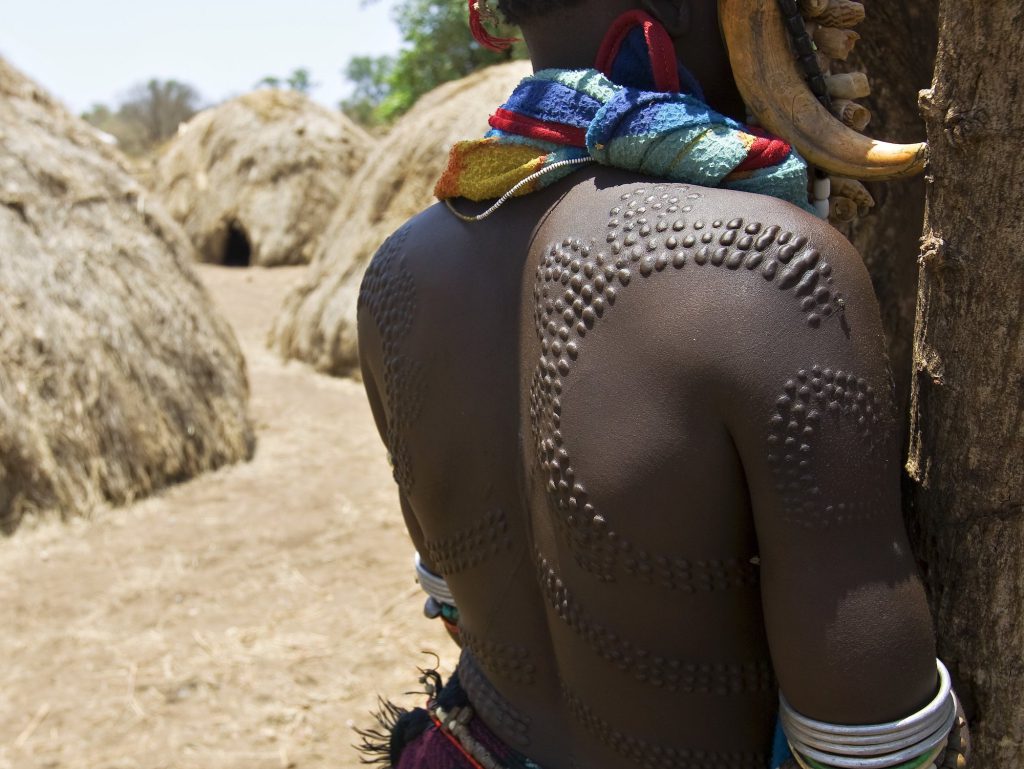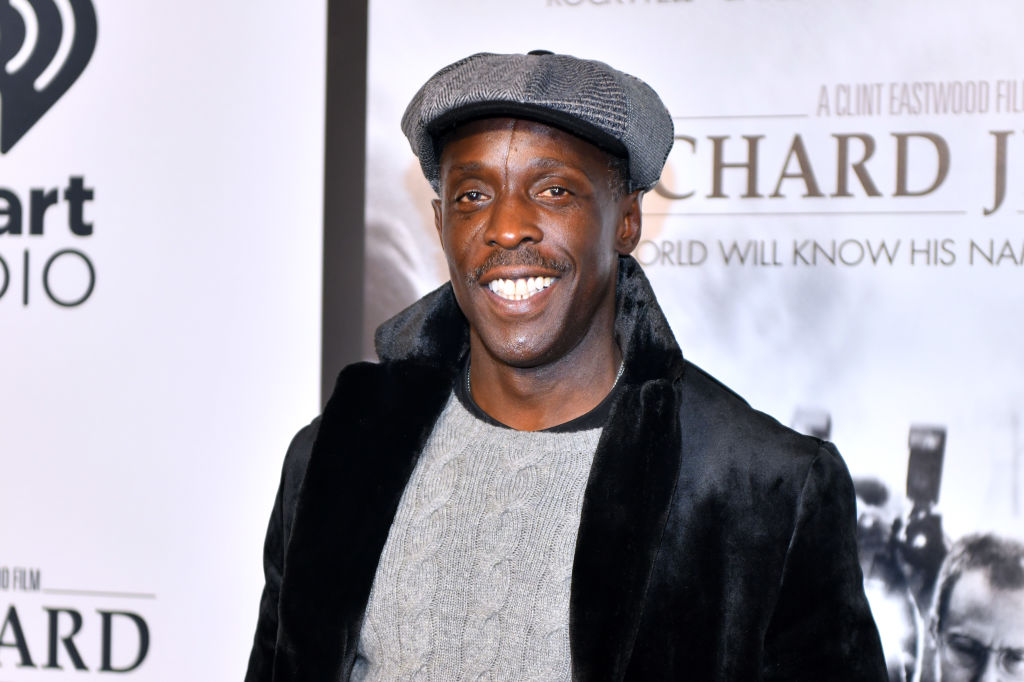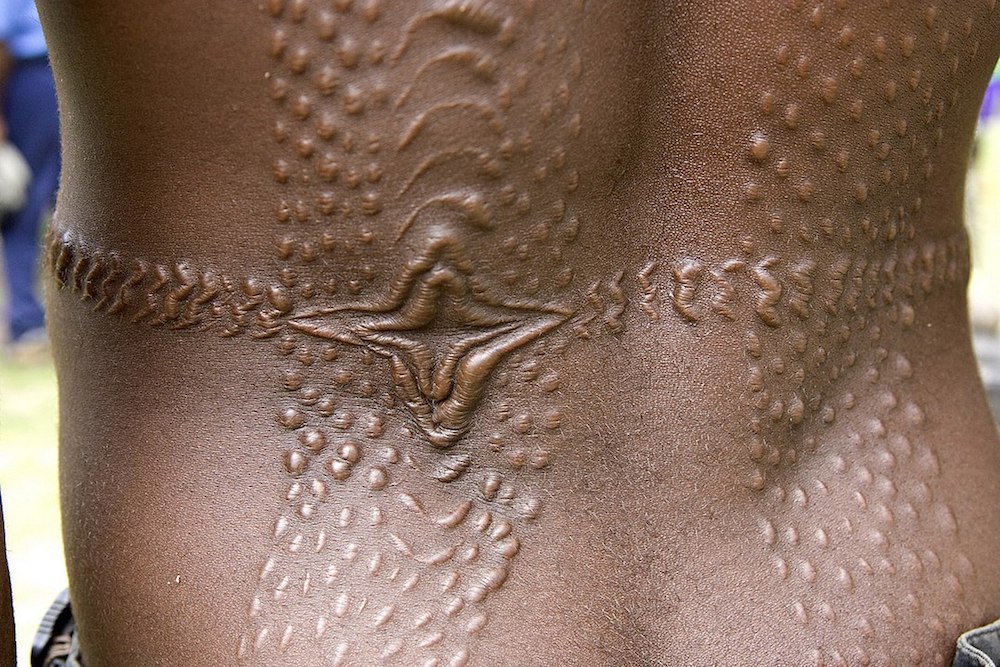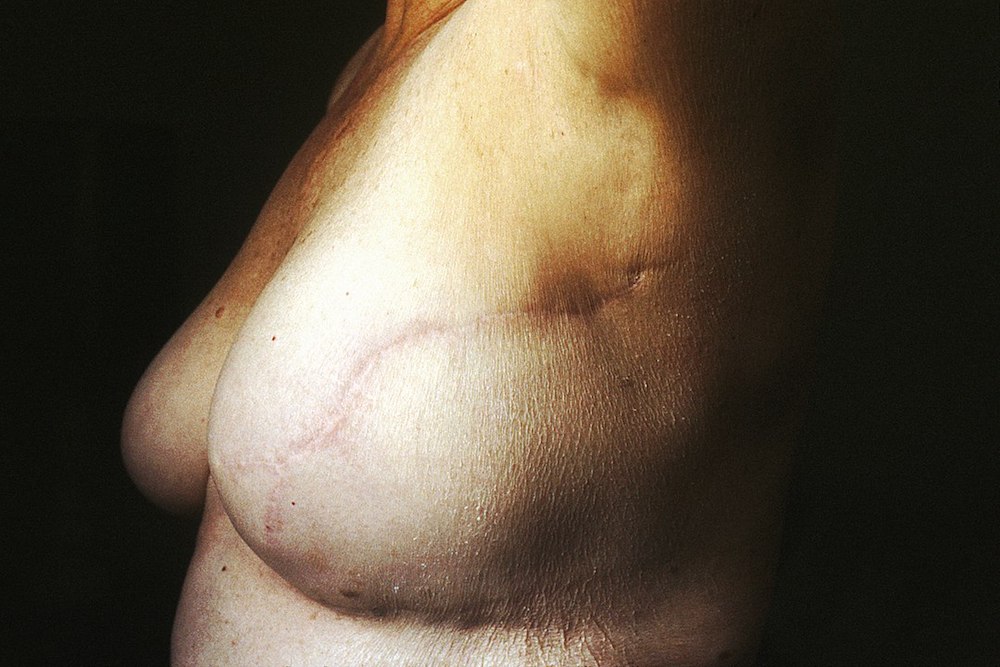What Scars Say About Sex and Stereotypes

I recently noticed a curious phenomenon playing out on various television series. In Outlander, Scottish heartthrob Jamie Fraser’s back is seared with scars from Black Jack Randall’s sadistic flogging. Joe MacMillan of Halt and Catch Fire was permanently disfigured from a rooftop fall when he was a child. In Tom Clancy’s Jack Ryan, actor John Krasinski’s character was gashed during a military helicopter crash in Afghanistan.
In each of these instances, the male leads have extreme back and chest scars, but their female loves don’t have a single mark.
As a cultural anthropologist, I look for social patterns and explore how they evolve over time. These shows prompted me to think about patterns in scars: Why do humans have different views about scars on men versus women? What kind of assumptions do people make about others based on their scars? How does scarring in modern times differ from scarification in traditional societies?
Scars are embodied history—stories on our skin waiting to be told. They tell powerful human tales of violence, pain, survival, renewal, second chances, victory, and connection through traditional rituals. Scars preserve the past; they become somatic museums. If we remember that the navel is basically a scar, we all begin with a scar. But it gets much more complicated—and interesting—than that.
No one knows when humans started practicing deliberate scarification, because skin does not preserve well over thousands of years. But rock paintings in Algeria from around 6000 B.C. depict people decorated with dots and lines that may represent scarring.
Scarification was common in traditional societies of sub-Saharan Africa, New Guinea, and Australia, perhaps in part because scar patterns are more conspicuous on darker skin than tattoos (which were important, too). In some cultures, a sharp tool was used to slice line patterns into the skin. Sometimes, irritants such as caustic plants, charcoal, or ground cashews were added to fresh cuts to stimulate raised scars that resemble beads. This was sometimes done to infuse the person with the plants’ natural medicine or with spiritual protection.
Scarification is becoming less widespread today, but it is still practiced by many communities. Scar patterns are a way to inscribe bodies and faces with visual messages that convey meaning to a group. They are identity cards showing tribe, clan, gender, and sometimes age or social status.
For the Baule people of southern Ivory Coast, scarification is a symbol of culture and civilization that separates them from animals. The Yoruba people of Nigeria traditionally scarred their faces with stripes to mark them as members of the community even as they were displaced by slavery, conflicts, and marriage.
Scarification is also a rite of passage, separating individuals from a former status and initiating them into a new one. Nuer boys of the Sudan and Ethiopia came of age in a gaar ceremony, during which six parallel lines were cut across their foreheads. The newly scarred men could marry, own cattle, and go to war. Among the Nuba in Sudan, scarification traditionally indicated social status and maturity; girls received successive marks at puberty, first menstruation, and after weaning their first child.
Scars given to infants and young children identified them in specific ways or conferred protection. Scarification was also part of a “hardening” process to prepare youth for life’s physical and emotional trials. Enduring painful rituals of scarification might be traumatic, but the ordeal was also a welcome test of toughness with rewards, and the scars were a sign that one had become a new person worth admiring.
When American anthropologist Paul Bohannan discussed the pain of scarification with the Tiv people of Nigeria, they told him, “Of course it is painful. What girl would look at a man if his scars had not cost him pain?”
“Scarification, one of the finest of decorations, is paid for in pain,” Bohannan wrote. “The pain is the proof positive that decoration is an unselfish act, and that it is done to give pleasure to others as well as oneself.”
In addition, “scars are considered to enhance the woman’s sexual appeal,” according to anthropologist Victoria Ebin, author of The Body Decorated. For Tiv people, for example, raised scars can “induce strong erotic feelings when touched, both among women and men.
Nevertheless, scarification is declining, due to concerns over infectious diseases, pressure from governments that think scars are unpatriotic because they express loyalty to tribes, and changing cultural norms. Among the Bini of southern Nigeria, both tattooing and scarification have been replaced by distinctive clothing styles; some tunics are imprinted with scarification marks where they were once inscribed on the body. Nigerian Igbo scarification has moved from bodies to designs painted by women on houses and pottery.
The modern perspective—sometimes subtly racist, sometimes lingeringly colonialist—has made scarification seem “primitive” and therefore undesirable. Ivory Coast–based photographer Joana Choumali documented men and women who told her they were once proud of their facial scarification but became ashamed of it when they moved to urban areas and encountered discrimination and ridicule. “I do not want this for my children,” a scarified man from Burkina Faso told Choumali. “We are the last generation.”
People make judgments about others based on their scars because scars tell stories—of social identity, of individual choices, and even of personality. That’s the case for both scarification and the unintentional scars that are part of human life.
When writer and actor Tina Fey was 5 years old, a stranger slashed her face, leaving a still-prominent mark by her mouth. In her biography, Bossypants, she describes the varied ways people react to her scar as a type of social screening: “My whole life, people who ask about my scar within one week of knowing me have invariably turned out to be egomaniacs of average intelligence or less.” Many adults, she says, treated her with extra kindness because of her scar.
Franz Boas, “the father of American anthropology,” was slashed on his face during a duel at the University of Heidelberg in 1877. He was reluctant to report his facial wounds to his parents, since it would reveal that he was distracted from his studies. After Boas began his first academic position in the U.S., a local newspaper severely criticized his scars, saying they gave him the appearance of someone from “the criminal classes.”
Scars can convey positive or negative messages about the bearer depending on the circumstances and severity of the scarring.
Unlike scarification, which tells a story of group membership, most scars today record tales of individual experience. Scars can convey positive or negative messages about the bearer depending on the circumstances and severity of the scarring.
Fey’s subtle scar tells the story of an innocent girl victimized by a violent man, so her scar invites kindness and a protective concern. Boas’ prominent scars tell a tale of a man who chose violence for an individualist aim. This is not the kind of choice that’s admired in academia, so his scar engendered censure.
Severe scars that disfigure the face are seen as not only unattractive but also a sign of bad character. In a 2019 study, Penn Medicine scientists found that participants perceived people with facial disfigurement as being emotionally unstable, untrustworthy, unhappy, and less intelligent.
Such stereotypes are expressed in entertainment fiction. Disfiguring facial scars can mark a character as evil (Heath Ledger’s Joker, whose cheeks were gashed with a “Glasgow smile”), merciless and vengeful (the claw-scratched Colonel Miles Quaritch in Avatar), malicious (Scar in The Lion King), or complex and dangerous (The Wire’s Omar Little, played by Michael K. Williams, whose face was razored in real life).
Gender also looms large in people’s judgements about scars. In a 2008 study in the U.K., men and women rated the attractiveness of opposite-sex faces with and without minor scars. Women rated men with facial scars as more attractive for short-term relationships. They showed an equal preference for scarred and unscarred men for long-term relationships. When participants were asked to guess what caused the scars, women typically attributed the men’s scars to a fight, while men usually blamed the women’s scars on an accident.
For men, minor scars are, like wrinkles, generally considered positive: They provide a rugged look, reinforcing impressions of strength and fortitude. Scars are sexy assertions of masculinity. They are trophies of heroism and toughness. They not only differentiate men from women; they also give rise to manliness rankings among men.
Nowhere is the one-upmanship of scars and masculinity better shown than in the blockbuster movie Jaws. In a moment of male bravado and poignancy, shark hunter Quint and shark expert Matt Hooper compete to show their scars. They volley back and forth, showing scars from a St. Patrick’s Day brawl, a moray eel, an arm-wrestling contest, a bull shark bite, a thresher shark attack, and (jokingly) a broken heart. Then the story turns dark and somber as Quint explains the story behind a scar on his forearm. When his ship was torpedoed, he suffered four days in the ocean as sharks devoured hundreds of his shipmates. Quint effectively wins the manliness contest, since his scar represents the endurance of unspeakable terror.
By contrast, scars on women are rare in the entertainment industry and in media. The message seems to be that women should be scar-free or, if possible, conceal all scarred areas. A scarred woman risks being considered “damaged goods.” Scars could diminish her social worth, suggesting misfortune, carelessness, or a problematic past.
The aforementioned 2008 study found that women’s attractiveness was not affected by minor facial scarring. But in a study of breast cancer survivors, participants rated women with breast scarring as less attractive, and they ranked celebrities with breast scars as especially unattractive.
Many women have said that their partners feel disgusted or turned off by their mastectomy scars. And when a New York Times Magazine cover featured a breast cancer survivor with a scar where her breast had once been, it became one of the most controversial images in the magazine’s history.
When men have scars that represent the endurance of pain, they can be seen as sexier. But the same is not necessarily true of women. Pregnancy and birth scars epitomize this view. Giving birth can be an excruciatingly painful experience that is certainly worth honoring. Yet many women are especially self-conscious of their Cesarean birth scars and pregnancy stretch marks and invest significant money and effort to reduce them.
There are signs that the gendered social anxieties surrounding scars are slowly changing. In The Scar Project and a Huffington Post photo series, women reveal their scars and proudly celebrate what the marks symbolize: resilience, risk-taking, bravery, and survival. “My scars make me feel like a Rockstar,” one woman said. Alternatively, some breast cancer survivors are getting tattoos that transform their mastectomy scars into beautiful body art that projects positive images.
Still, even metaphorical scars caused by psychological wounds are infused with inequalities. A recent New York Times article stated that because of gender-based disparities, the COVID-19 “Pandemic Could Scar a Generation of Working Mothers.” And former U.N. Ambassador Susan Rice recently wrote about how decades of racial discrimination “scarred” her father deeply.
Whether literal or metaphorical, deliberate or accidental, profound or trivial, scars reveal relationships between individuals and their places in society: He was wounded in a war because he felt compelled to serve. She decided to have a hip replacement because the pain was crippling. He once felt so bad he attempted suicide by cutting his wrists. She survived cancer and is moving forward with hope.
A scar always represents pain endured. Pain is part of what it means to be human, and scars become silent proof of that humanity. For some, scars symbolize that life is full of pain and suffering that must be endured with strength and stoicism. It’s no exaggeration, therefore, that to be human is to be scarred.



































